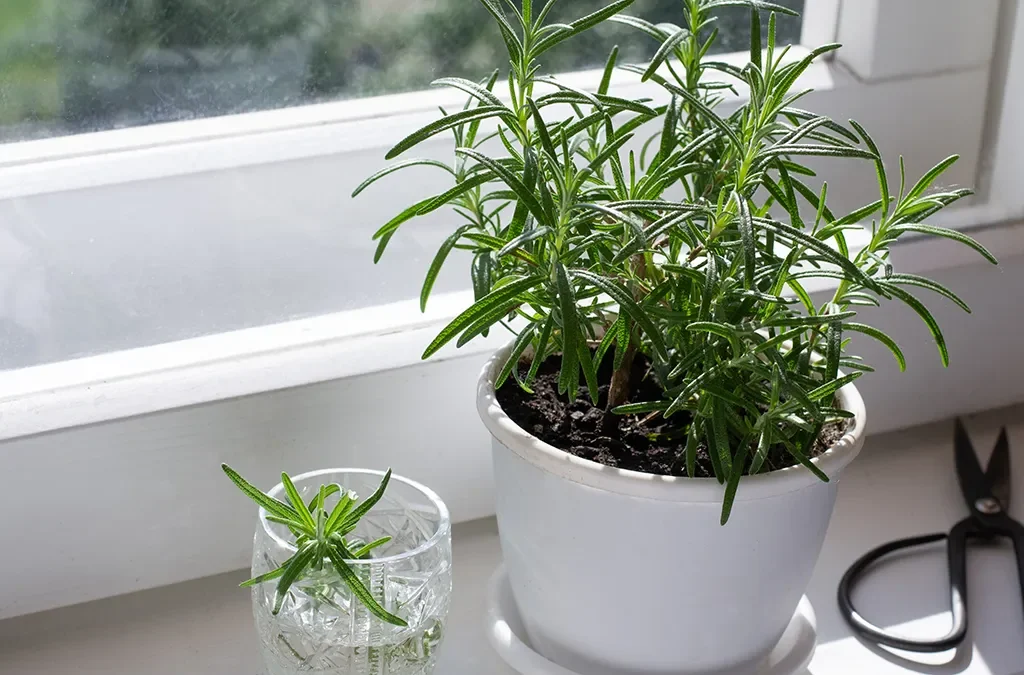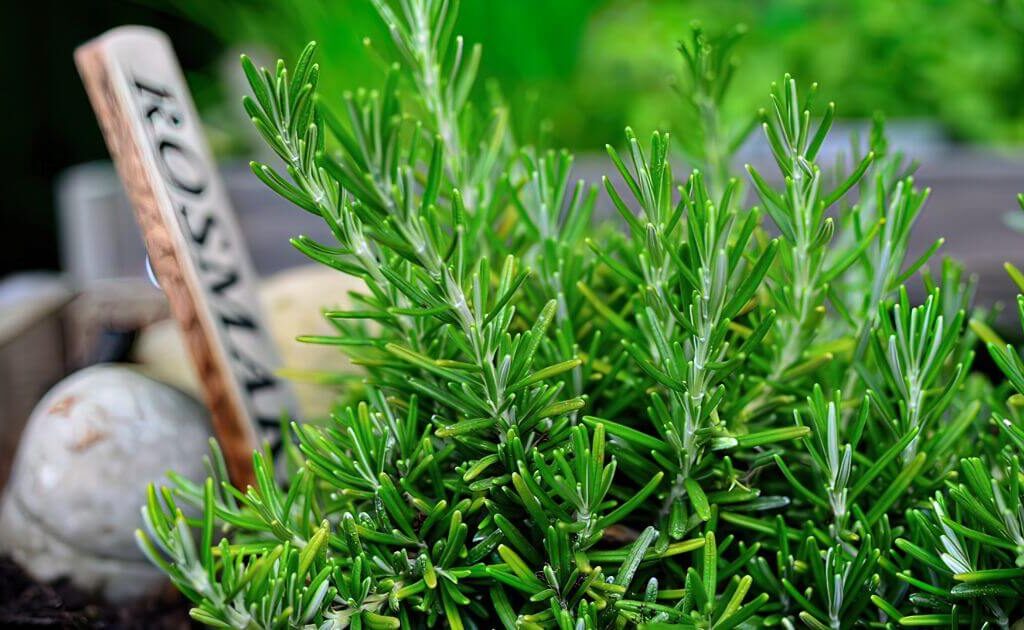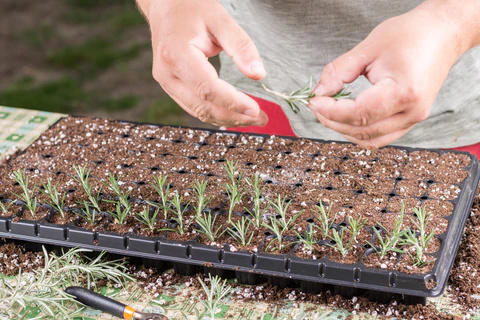If you’re searching for an easy-to-grow, aromatic, and visually attractive herb to add to your garden, look no further than rosemary. With its fragrant, needle-like leaves and woody stems, rosemary is both a culinary favorite and a charming ornamental plant.
Known for its bold, pine-like aroma and flavor, this Mediterranean native thrives in sunny, dry conditions and requires minimal care. In this guide, we’ll take you through everything you need to know about how to start growing rosemary — from choosing the right variety to harvesting and preserving your fragrant bounty.

Why You Should Grow Rosemary
Rosemary isn’t just a kitchen staple; it’s also a fantastic addition to any garden or indoor plant collection. Here’s why:
- Highly aromatic and flavorful — perfect for enhancing meats, vegetables, and breads.
- Drought-tolerant and hardy — thrives in hot, sunny, and dry conditions.
- Visually appealing — with delicate blue flowers and evergreen foliage.
- Low-maintenance — requires very little attention once established.
- Medicinal benefits — traditionally used for boosting memory, soothing stress, and aiding digestion.
Whether you’re planting rosemary for cooking, landscaping, or its herbal remedies, it’s a valuable plant that’s as useful as it is beautiful.

Popular Rosemary Varieties
Before you plant, consider which rosemary variety best suits your needs:
1. Tuscan Blue
- Upright growth habit.
- Large, bright blue flowers.
- Excellent culinary flavor.
2. Arp
- Cold-hardy variety, tolerating temperatures down to 10°F (-12°C).
- Light green foliage.
- Robust flavor, perfect for cooking.
3. Prostratus (Creeping Rosemary)
- Low-growing, trailing variety.
- Ideal for ground covers and hanging baskets.
- Produces dainty blue flowers.
4. Blue Spires
- Tall, elegant shrub.
- Popular for ornamental hedges.
- Highly aromatic leaves.

When and Where to Plant Rosemary
Rosemary is a sun-loving herb that flourishes in warm, dry conditions, much like its Mediterranean homeland.
Best Planting Time:
- Outdoors: After the last spring frost and once the soil has warmed.
- Indoors: Year-round, as long as it gets sufficient sunlight.
Ideal Growing Locations:
- Full sun — at least 6-8 hours of direct sunlight per day.
- Well-draining soil — sandy or loamy soils preferred.
- Containers — great for patios, balconies, and indoor herb gardens.
- Rock gardens and raised beds — improve drainage and showcase rosemary’s natural beauty.
Avoid damp or heavy clay soils as rosemary dislikes “wet feet.”

How to Plant Rosemary
Starting from Seeds:
Growing rosemary from seed can be challenging because of its slow and unreliable germination. However, it’s possible with patience.
Steps:
- Sow seeds on the surface of well-draining seed-starting mix.
- Lightly press seeds into the soil without covering.
- Keep soil moist but not soggy.
- Maintain temperatures of 65–75°F (18–24°C).
- Germination may take 2-4 weeks.
From Cuttings (Recommended):
The easiest and fastest way to grow rosemary is by propagating from cuttings.
Steps:
- Snip a 4-6 inch cutting from a healthy rosemary plant.
- Strip the leaves from the lower half of the stem.
- Dip the cut end in rooting hormone (optional).
- Place the cutting in water or directly into moist, sandy soil.
- Roots typically develop in 2-3 weeks.
From Nursery Plants:
Purchasing small rosemary plants from a nursery is a foolproof method for beginners.
Steps:
- Space plants 18-24 inches apart in garden beds.
- Water thoroughly after planting.
- Mulch lightly with gravel or pebbles to retain warmth and improve drainage.

Ideal Soil, Light, and Watering Requirements
Soil:
- Well-draining, sandy, or loamy soil.
- pH between 6.0–7.5.
- Avoid overly rich soils, which encourage weak, spindly growth.
Sunlight:
- Requires full sun — the more sunlight, the better the aroma and flavor.
Watering:
- Rosemary is drought-tolerant once established.
- Water deeply but infrequently; allow the soil to dry out between waterings.
- In containers, water when the top inch of soil feels dry.
Caring for Rosemary
Rosemary is one of the easiest herbs to care for, with a few simple practices to keep it thriving:
- Prune regularly — trim stems to promote bushier, compact growth.
- Mulch with gravel or stones in wet areas to improve drainage.
- Divide every 3-4 years or replace older plants to maintain vigor.
- Protect from frost — bring potted plants indoors or cover garden plants in colder regions.
- Minimal fertilizing — rosemary thrives in lean soils; over-fertilizing weakens flavor.

Common Pests and Problems
Rosemary is naturally resistant to many pests due to its aromatic oils but can occasionally encounter:
- Aphids — remove with a strong spray of water or insecticidal soap.
- Spider mites — increase humidity and spray with water.
- Root rot — caused by poor drainage and overwatering.
Ensure excellent drainage and avoid overwatering to prevent most issues.
Harvesting Rosemary
When to Harvest:
- Begin harvesting once plants are about 8 inches tall.
- Best flavor is just before flowering in late spring or early summer.
How to Harvest:
- Use sharp scissors or pruners to cut stems about 2-3 inches from the tip.
- Never cut more than one-third of the plant at a time.
Frequent harvesting encourages bushier, fuller growth.
How to Store and Preserve Rosemary
Fresh Storage:
- Place sprigs in a glass of water or wrap them in a damp paper towel inside a plastic bag.
- Refrigerate for up to 2 weeks.
Drying Rosemary:
- Tie stems into small bundles and hang them in a cool, dark, dry place.
- Once dry, strip the leaves and store them in airtight jars.
Dried rosemary retains its flavor for 6-12 months.
Freezing:
- Chop fresh rosemary and freeze it in ice cube trays with olive oil or water.
- Use frozen cubes in soups, stews, and roasted dishes.
Companion Planting with Rosemary
Rosemary pairs well with many other plants in the garden.
Good companions:
- Cabbage
- Beans
- Carrots
- Sage
- Thyme
Benefits: It repels pests like cabbage moths and carrot flies, making it a helpful companion plant in vegetable gardens.
Growing Rosemary Indoors
Rosemary makes an attractive and functional indoor plant.
Tips for Success:
- Place near a south-facing window with at least 6 hours of sunlight daily.
- Use a well-draining potting mix with added sand or perlite.
- Water when the top inch of soil is dry.
- Rotate the pot occasionally for even growth.
In winter, reduce watering and keep away from drafts or heaters.
Pro Tips for Growing Rosemary Successfully
- Avoid overwatering — rosemary prefers dry conditions.
- Prune regularly — keeps the plant compact and productive.
- Use gravel mulch — in humid climates to improve soil drainage.
- Protect from frost — bring containers indoors in cold weather.
- Harvest frequently — to encourage fresh new growth.
Final Thoughts
Rosemary is a versatile, hardy, and aromatic herb that belongs in every kitchen and garden. Whether you grow it in your backyard, on a sunny patio, or a windowsill herb garden, rosemary rewards you with a beautiful, fragrant plant that enhances your meals and brightens your garden.
With minimal effort and a little sunlight, you’ll enjoy a thriving rosemary plant year-round. Now that you know how to start growing rosemary, it’s time to grab a pot or clear a sunny garden spot and get started!





